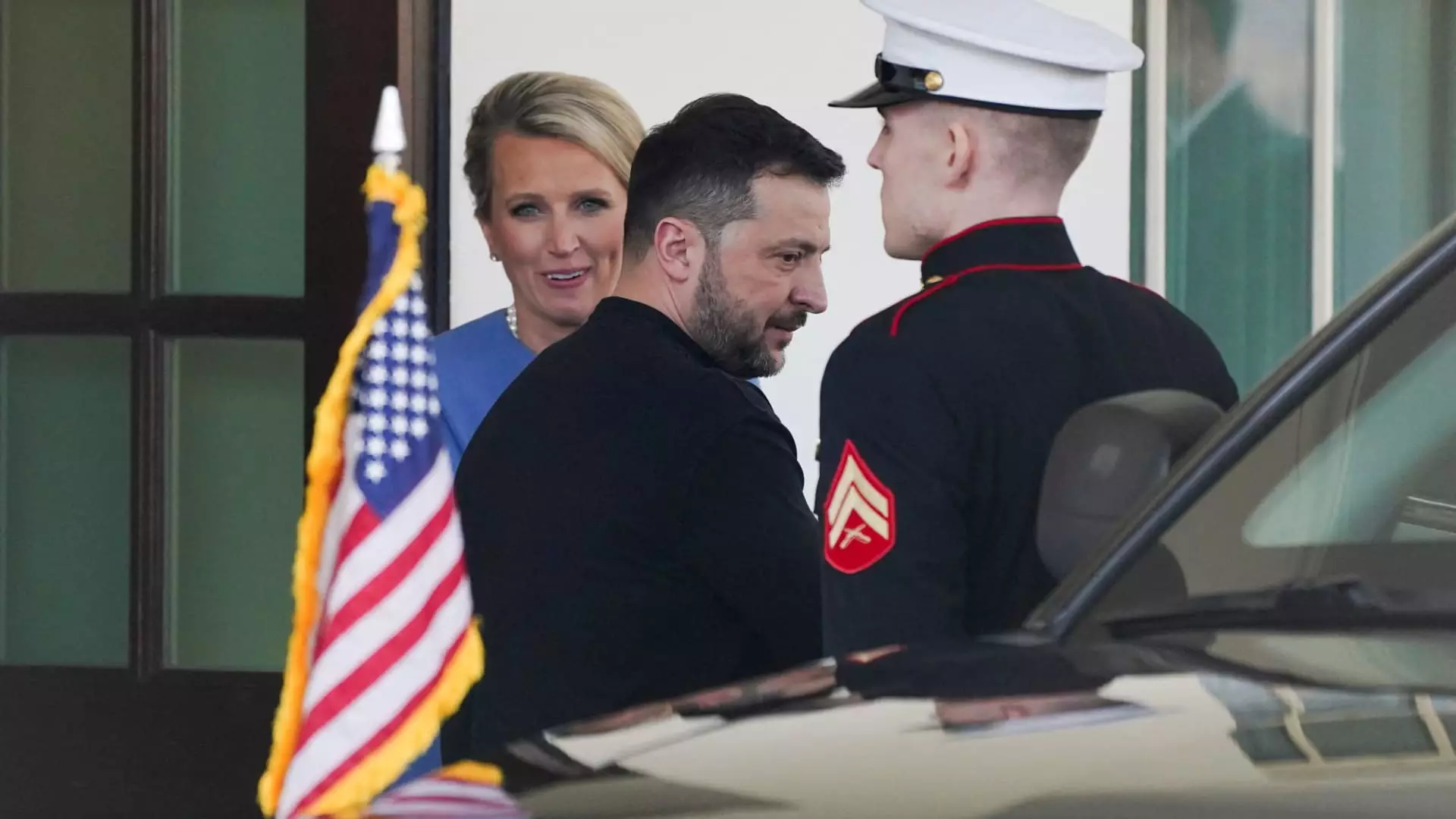Ukrainian President Volodymyr Zelenskyy’s recent visit to the White House ended dramatically, culminating in the cancellation of what was supposed to be a promising joint press conference with President Donald Trump. The strained atmosphere and unproductive discussions were palpable as Zelenskyy exited the Oval Office, leaving behind a resonant silence rather than the optimistic discussions many had anticipated. The tense interaction not only emphasizes the complexities of international negotiations but also highlights the challenges that arise when expectations clash with political realities.
The backdrop for this diplomatic gathering was the ongoing conflict between Ukraine and Russia, which has persisted for multiple years now. Zelenskyy was in Washington ostensibly to negotiate a deal concerning access to Ukraine’s rare earth minerals—a critical component considering the growing demand for these resources in the technology and energy sectors. However, the failure to secure a favorable outcome underscores the unpredictable nature of modern diplomacy, especially when national interests and geopolitical strategies are at stake.
As Zelenskyy departed without reaching an agreement on the minerals deal, it became evident that both sides diverged in their expectations. While Trump expressed a willingness to explore a future agreement, he simultaneously placed the responsibility on Ukraine to come to the negotiating table prepared for meaningful dialogue. This ostensibly backs Zelenskyy into a corner, as the urgency for peace is immediate, but the path toward achieving that peace remains rocky and fraught with obstacles.
The White House’s decision to cancel the press conference further illuminates the unease of the situation. Such cancellations are indicative not just of logistical issues but also signal a potential lack of coherence in the messaging that both leaders hoped to send to the public. The absence of a shared narrative post-meeting leaves concerns about the clarity and commitment to future peace efforts between the two nations.
Zelenskyy’s silence to the media’s inquiries as he exited and his subsequent social media post thanking the U.S. reflects an effort to maintain a semblance of cordiality despite the tense circumstances. By expressing gratitude, he perhaps attempted to reassure both Ukrainian citizens and the international community of America’s continued support, despite the failed talks. This nuance in diplomacy is critical, as appearances often matter significantly in international relationships. However, the optics of leaving without an agreement can be damaging and can influence public perception back in Ukraine, where expectations for U.S. support are high.
On the other hand, Trump’s characteristically brash statement following the meeting was revealing. He emphasized that emotional discussions often bring forth truths that may not emerge in calmer settings. His assertion that Zelenskyy “disrespected the United States” in the Oval Office reflects a narrative strategy aimed at framing the conversation as not just a diplomatic failure but a personal affront to U.S. sovereignty. By stating that Zelenskyy is “not ready for peace,” Trump positions himself as the gatekeeper of diplomatic resolution, turning the onus back onto Ukraine.
This encounter raises pertinent questions about the future of U.S.-Ukraine relations and the genuine prospects for peace in the region. As tensions with Russia continue to escalate, the need for a unified approach and a comprehensive strategy becomes increasingly critical. The recent developments signal a worrying trend where personal dynamics and political theatrics may overshadow substantive policy decisions that could benefit both parties.
The stalled negotiations also serve as a reminder that peace processes are rarely linear. They require patience, resilience, and often, the ability to manage disappointments along the way. For Zelenskyy, the path forward may require recalibrating his strategies, building stronger narratives around cooperation, and emphasizing the mutual benefits of a peace deal between Ukraine and Russia that also reassures Washington of its pivotal role.
Ultimately, the outcome of this high-stakes visit epitomizes the complexities of modern diplomacy, where dialogue is necessary but not always sufficient, and where both personal and national narratives intertwine in unpredictable ways. As international tensions simmer, it is essential that both leaders find common ground and navigate the intricate web of diplomacy with care to avoid exacerbating already fraught relations.


Leave a Reply